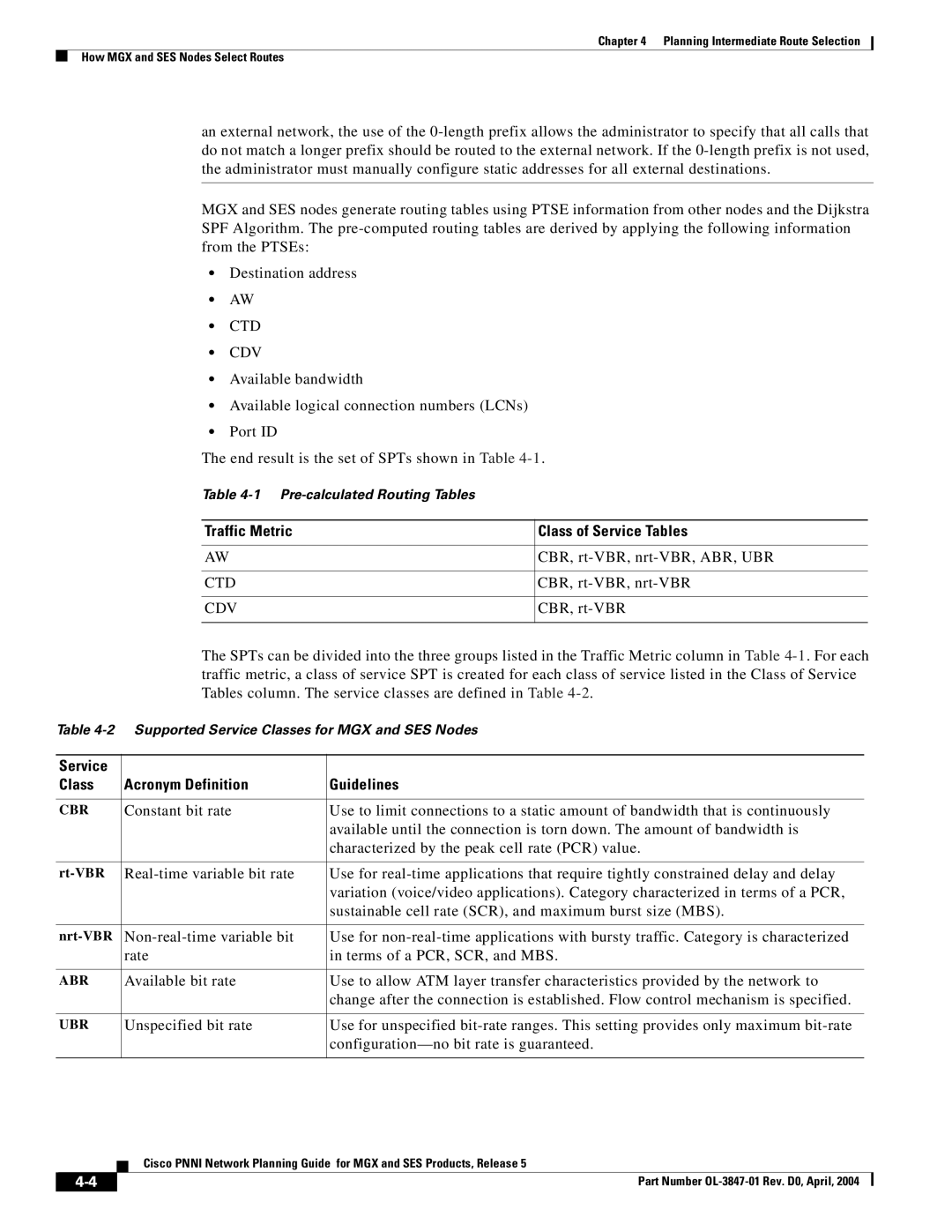
Chapter 4 Planning Intermediate Route Selection
How MGX and SES Nodes Select Routes
an external network, the use of the
MGX and SES nodes generate routing tables using PTSE information from other nodes and the Dijkstra SPF Algorithm. The
•Destination address
•AW
•CTD
•CDV
•Available bandwidth
•Available logical connection numbers (LCNs)
•Port ID
The end result is the set of SPTs shown in Table
Table
Traffic Metric
AW
CTD
CDV
Class of Service Tables
CBR,
CBR,
CBR,
The SPTs can be divided into the three groups listed in the Traffic Metric column in Table
Table
Service |
|
|
Class | Acronym Definition | Guidelines |
|
|
|
CBR | Constant bit rate | Use to limit connections to a static amount of bandwidth that is continuously |
|
| available until the connection is torn down. The amount of bandwidth is |
|
| characterized by the peak cell rate (PCR) value. |
|
|
|
Use for | ||
|
| variation (voice/video applications). Category characterized in terms of a PCR, |
|
| sustainable cell rate (SCR), and maximum burst size (MBS). |
|
|
|
Use for | ||
| rate | in terms of a PCR, SCR, and MBS. |
|
|
|
ABR | Available bit rate | Use to allow ATM layer transfer characteristics provided by the network to |
|
| change after the connection is established. Flow control mechanism is specified. |
|
|
|
UBR | Unspecified bit rate | Use for unspecified |
|
| |
|
|
|
| Cisco PNNI Network Planning Guide for MGX and SES Products, Release 5 |
Part Number |
